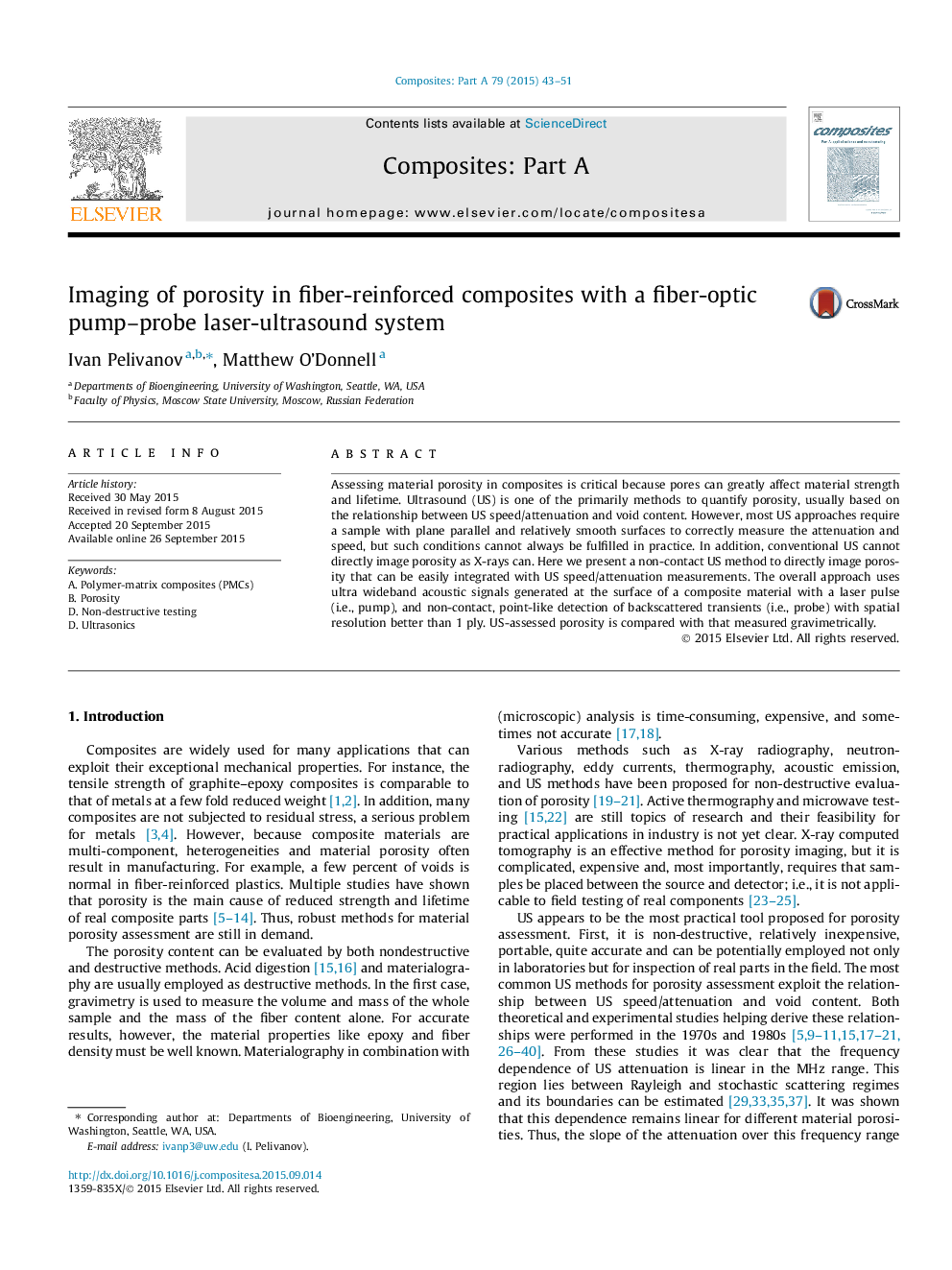| Article ID | Journal | Published Year | Pages | File Type |
|---|---|---|---|---|
| 1465837 | Composites Part A: Applied Science and Manufacturing | 2015 | 9 Pages |
Assessing material porosity in composites is critical because pores can greatly affect material strength and lifetime. Ultrasound (US) is one of the primarily methods to quantify porosity, usually based on the relationship between US speed/attenuation and void content. However, most US approaches require a sample with plane parallel and relatively smooth surfaces to correctly measure the attenuation and speed, but such conditions cannot always be fulfilled in practice. In addition, conventional US cannot directly image porosity as X-rays can. Here we present a non-contact US method to directly image porosity that can be easily integrated with US speed/attenuation measurements. The overall approach uses ultra wideband acoustic signals generated at the surface of a composite material with a laser pulse (i.e., pump), and non-contact, point-like detection of backscattered transients (i.e., probe) with spatial resolution better than 1 ply. US-assessed porosity is compared with that measured gravimetrically.
